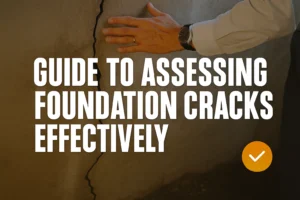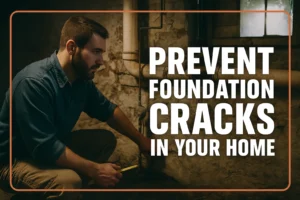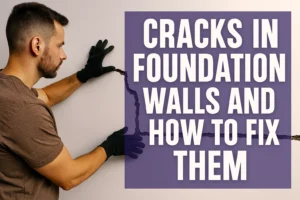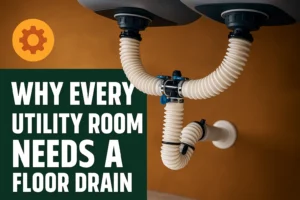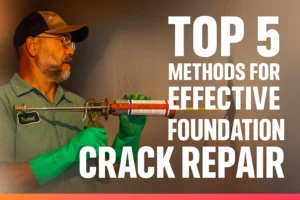Basement waterproofing is when you utilize a variety of techniques and materials to keep water from entering your basement, protect your home’s structure, and prevent problems resulting from moisture. It is a two-part process that requires preventing water from entering basement walls and floors, then controlling any water that does find its way inside, safely out and away from the foundation. Here, we explain how basement waterproofing works and the common techniques used.
How Basement Waterproofing Works
Basement waterproofing focuses on eliminating water intrusion or controlling the presence of already existing water. The techniques fall into three broad categories: exterior waterproofing, interior waterproofing and drain system.
Exterior Waterproofing
This is the best way of ensuring that water does not get into a basement. This happens by digging around the building to reveal the foundation walls, followed by applying a waterproof membrane or coating on the outside of the walls. This wall prevents the water from entering the concrete or masonry. Moreover, drainage systems (e.g., French drains or weeping tiles) are placed at a footing level to divert the groundwater to the outside of the foundation. Surface water should also be directed away through proper grading around the house exterior. Exterior waterproofing directly prevents water from reaching the foundation and has been known to be the most effective structural safeguard against basement leaks.
Interior Waterproofing
Interior waterproofing aims at controlling water that has already penetrated the basement or managing moisture that seeps through the walls or floors. Techniques include:
- Applying sealants and waterproof coatings to walls and floors to slow or block moisture.
- Crack injection using epoxy or polyurethane to seal foundation cracks and stop leaks.
- Installing interior drainage systems that capture water along the perimeter of the basement floor and channel it to a sump pump.
- Using sump pumps to pump collected water out and away from the house.
Although interior waterproofing does not stop water like exterior methods, it stops moisture inside the basement, prevents flooding and manages indoor air quality through dampness control.

Drainage Systems
Waterproofing that works effectively, whether on the exterior or interior, includes effective drainage that lowers hydrostatic pressure, which is the pressure exerted against the foundation walls by the groundwater that pushes it indoors. The common drainage systems include:
- French drains: This is the pipe that has holes and is installed to gather and redirect the water around the foundation.
- Sump pumps: These are installed in the sumps or pits to pump out the water in the basement.
- Weeping tiles: This is the tile placed on the ground around a footing to aid the trickling water away.
Drainage Hydrostatic pressure reduction through drainage is essential as it reduces the pressure of water behind basement walls, decreasing water leaks and structural damage.
Additional Techniques and Materials
- Polymer waterproofing: High-quality flexible waterproofs are applied to exterior walls made of advanced colorless polymer, and the quality of the product is not influenced by soil pH.
- Vapor barriers: These are used indoors to ensure that the basement walls and floors are not penetrated by moisture vapor that will pollute the air.
- Box-type waterproofing: It entails covering the basement area with internal drainage to manage water seepage.
There are variations in the combinations that each home will need based on the soil conditions, the water table, the type of foundation, or the budget.
Cost Of Waterproofing Basement
Waterproofing a basement costs between $2,500- $8200 in 2025, with an average of around $5,000 to $5,200 for a full waterproofing job, depending on the size of the basement and methods used.
| Waterproofing Method/Component | Average Cost Range |
| Interior Waterproofing | $500 – $10,000 |
| Exterior Waterproofing | $3,000 – $15,000 |
| Waterproof Paint/Coatings | $1 – $2 per sq ft |
| French Drain Installation | $40 – $120 per linear ft |
| Sump Pump Installation | $600 – $2,500 |
| Mold Remediation (if needed) | $1,500 – $4,000 |
| Average Full Basement Waterproofing | $2,500 – $8,200 (typical) |
The overall cost depends on discussed factors like the size of the basement, the type of foundation, water problems and local labor costs. Exterior protection is more expensive yet offers a more extended form of protection by preventing water from joining your foundation. None of the methods treats new water problems; rather, indoor methods are relatively cheaper.
Basement waterproofing helps to prevent costly foundation crack repairs, mold destruction, and health risks. Getting a professional estimation is always advisable to obtain proper quotes specific to your domestic circumstances and demands.

Why Understanding Waterproofing Methods Matters
The type of waterproofing system that should be installed will depend on the source and nature of the water problems. Stopping water from getting in is best dealt with by the exterior, while existing moisture and leaks are better addressed from within. In many cases, a combination of methods, exterior membranes, interior draining and sump pumps is the most effective form of protection.
Maintaining your home with waterproofing allows homeowners to prevent foundation damage, avoid mold and mildew, which is bad for one’s health, save money on energy costs by having a dry and insulated basement, while increasing property value.
Conclusion
Basement Waterproofing is the key to protecting your home. It eliminates flooding, structural deterioration, mold growth and decreases in energy efficiency to provide a truly safe, healthy and dry living space. If you need exterior sealing or interior moisture control or a combination of both, professional waterproofing protects your home’s foundation and value.
For a reliable and professional basement waterproofing service, choose Lapans Basement Waterproofing. Our team of technicians is highly skilled and experienced to keep your basement dry all year round. Call Lapans today for a free estimate and safeguard your home’s foundation.
Frequently Asked Questions
When installed correctly, waterproofing systems can last an average of 10-30 years.
While minor sealant applications are DIY-friendly, major waterproofing means require a pro with the specialized tools.
Yes, a dry basement raises the value of your home by protecting it from damage, along with making it a more usable space.
Spring and summer are ideal for exterior work when the ground is dry, but interior solutions can be applied any time.
